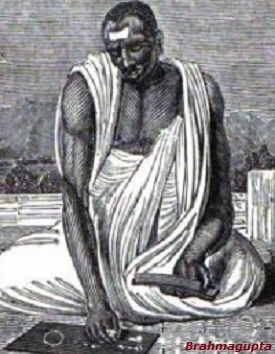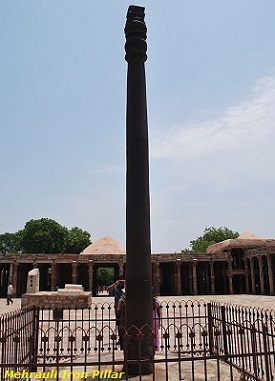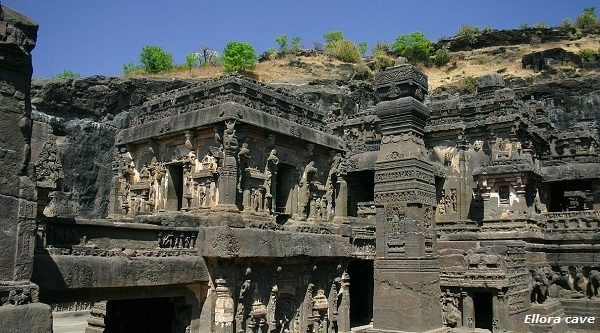
- Ancient Indian History - Home
- Study of Indian History
- Writing of Ancient Indian History
- Imperialist Historiography
- Historiography Nationalist Approach
- Marxist School of History
- Sources of Ancient Indian History
- Archaeological Sources
- Geographical Background
- Geography in Ancient Literature
- Stone Age Cultures
- Mesolithic Culture
- The Neolithic Age
- Chalcolithic Period of India
- Chalcolithic Culture In India
- Harappan Civilization
- Harappan Town Planning
- Harappan Crafts & Industries
- Harappan Culture
- Harappan Religion
- Harappan Chronology
- Vedic Civilization
- Vedic Society
- Vedic Politics
- Vedic Religion & Philosophy
- The Aryan Invasion
- Later Vedic Age
- Social System after Vedic Age
- Achievements of Indian Philosophy
- Evolution of Jainism
- Evolution of Buddhism
- Alexander’s Campaign in India
- Maurya Dynasty
- Kalinga War & its Impact
- Society & Economy during Mauryas
- Mauryan Governance
- Early History of South India
- Age of Smaller Dynasties
- Literature of Satavahana Period
- Society of Satavahana Period
- Economy of Satavahana Period
- Technology of Satavahana Period
- Chola Dynasty
- Pandya Dynasty
- Chera Dynasty
- Period of Foreign Invaders
- Gupta Period
- Decline of Guptas
- Governance of Gupta Period
- Literature of Gupta Period
- Economy in Gupta Period
- Science & Tech of Gupta Period
- India after the Gupta Period
- Period of Harsha
- South India during the Harsha Period
- Kadamba Dynasty
- History of Kamarupa
- India after Harsha
- Gurjara Pratiharas
- Palas of Bengal
- Rashtrakutas of Deccan
- Literature after the Harsha Period
- Society after the Harsha Period
- Economy after the Harsha Period
- Religion after the Harsha Period
- References & Disclaimer
Science and Tech of Gupta Period
India had much advanced knowledge in the fields of mathematics, astronomy, and medicine during this period in comparison to any other country in the world.
Arabs borrowed Indian knowledge of science and technology then it was taken by the western world from them.
The mathematics and astronomy originated in Vedic period itself.
Aryabhata, a great mathematics, wrote the book Aryabhatiya in Kusumpura (Pataliputra) at the age of 23 years.

Aryabhatiya is divided into four parts and the most important features of Aryabhata's mathematical system was the unique system of notation. It is based on the decimal place-value system unknown to other ancient people.
Aryabhata explained various principals of geometry, an area of a triangle, the area of circle and the theorem relating to rectangles.

Brahmagupta was also a famous mathematician. He wrote Brahmsiddhanta in A.D. 628. He developed rules for operating with negative qualities and with zero. He began to apply Algebra to astronomical problems.
Jyotisa was an ancient term used for astronomy and astrology. Varahamihira wrote Panchasiddhantika in A.D. 505. He was popular person in the court of Chandragupta II.
Panchasiddhantika consisted five works (siddhantas), which is popular as Paitamaha, Romaka, Paulisa, Vasishtha, and Surya.
The Suryasiddhanta is the most important and complete work on the astronomy of the period.
Varahamihira wrote Brihatsamhita. This is considered as an encyclopedic work on astrology.
Varahamihira's son, Prithuyashas also wrote a book on astronomy in about A.D. 600, named as Harashatpanchashika.
Medicine
Ayurveda, literally means science of longevity. This is the name of Indian medical sciences. It originated during the Vedic period.
Vedic literature, particularly, Atharvanaveda consisted of more than seven hundred hymns on the topics related to Ayurveda.
Hastayurveda is a guide book that describes (elaborately) the animal diseases particularly about elephants.
Asvasastra was written by sage Salihotra. It is a treatise on the horse.
Metallurgy
Chemistry was another science that developed along with the medicine that helped in the development of metallurgy.
Nagarjuna the great Mahayanist was also genus in chemistry.
The Mehrauli iron pillar is a living memorial of this period. It portrays the progress in metallurgy achieved 1,500 years ago by the Indians. It has been surviving without rusting since its establishment (i.e. for over 1,500 years).

Art and Architecture
The economic prosperity of the country during the Gupta period led to all round development in the field of sculptural art, architecture, and painting.
In the Deccan, rock-cut caves were excavated. There are nine caves at Udaygiri near Vidisa. These are partly rock-cut and partly stone-built.
Ajanta caves were built on the new line of architecture by the great beauty of their pillars of varied design and size and the fine paintings with which the inner wall and ceiling are decorated.
Elloras rock-cut monasteries and chaitya halls are other piece of architecture. The Brahmanical, Buddhist, and Jain caves portray the final phase of development.

Kailash temple is a magnificent monolithic temple with a spacious hall and finely carved pillars. It was carved into a block of hill.
The seven monolithic temples and number of pillared halls at Mamallapuram were carved by the Pallava kings Mahendravarman and Narasimhavarman in the 7th century A.D.
These monolithic temples were popularly called as Rathas. These massive structural temples were completely cut out of rock.
Monasteries and stupas were also built during this period. These Monasteries were also the centers of education.
The famous centers were at Bodhgaya, Sarnatha, Kusinagara, Srayasti, Kanchi, and Nalanda.
The Nalanda University grew into the most prestigious establishment during the 5th century A.D.
Hiuen-Tsang mentioned in detail about the great temples, monasteries, and library buildings of Nalanda mahavihara.
Dharmarajaratha at Mamallapuram is the earliest examples of the rock-cut temple of Dravidian styles.
The structural temples at Kanchi, known as Kailasanatha and Vaikuntha Perumal were all built by the Allava Kings.